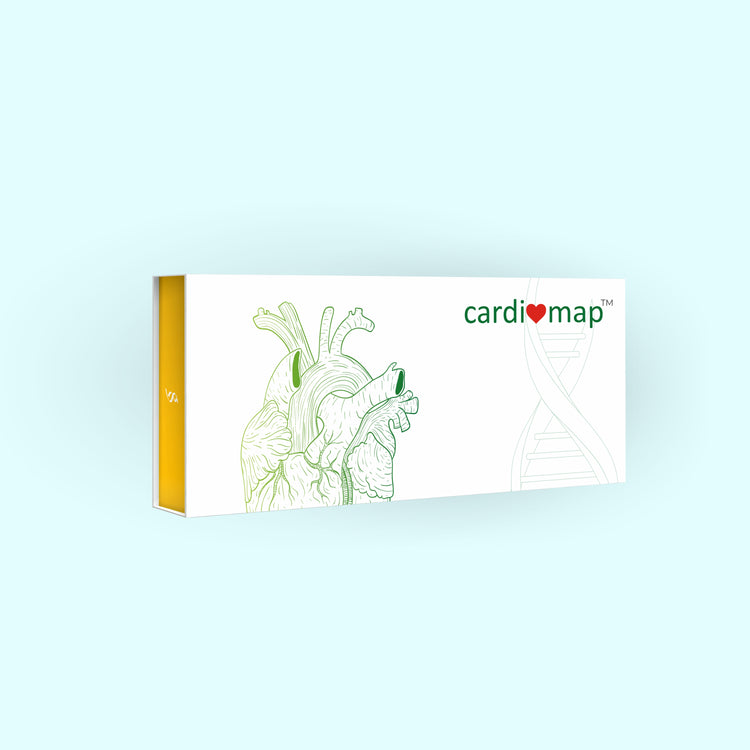Poly Unsaturated Fatty Acids: The Genetics Behind
Aug 28, 2019
5270 Views
We often tend to become over-cautious when it comes to consuming foods. That includes foods of all varieties; fruits, vegetables, cereals, and oils. Among all, it is with the oils we should take good care. we are in an era of modified food intake where the typical modern western diet (MWD) has occupied the common palate in the society. As good as it may seem, this very diet has become an early invitation to a plethora of chronic diseases. Qualitative and quantitative research has shown technological advancements in developing foods that offer engaging taste and rich calories. Scientific proof is visibly evident that a majority of these changes have led to dangerous levels in obesity and gene-diet interactions that otherwise cause systemic and localized pain. This inflammation promotes the earlier onset of many diseases like digestive disorders, neurological disorders, cancer, and cardiovascular diseases. Of everything, the biggest challenge comes from consuming refined foods and animal fats. And, among the fats, polyunsaturated fatty acids (PUFA) when consumed, improve cardiovascular health and have many other advantages. Of supreme interest is to remember that the American Heart Association (AHA) recommends taking a minimum of 5–10% of energy through n-6 PUFAs. On top of this, with the discovery of gene-gene variants and nutrigenomic interactions among dietary n-6 fats, it’s strictly and seriously advisable to have knowledge of consumable and non-consumable fatty acids; what are they, why should they not be consumed, and the advantages of low-fat diet. (Chilton Floyd H et al, 2014).
What Are PUFAs And Why Are They Important?
Chemically, PUFAs are unsaturated fatty acids with greater than one double bond in the backbone and are considered highly unstable. The length of the double bonds allows them to play a key role in our health that other fats cannot. Not every fat plays a similar role in our cell membranes, generate regulators for controlling inflammation and allow them to function properly and many genetic events in one way are influenced by PUFAs. Majority of PUFAs in our body come either from the food we take, or by producing them inside our body should we have building blocks (omega-6 PUFAs and omega-3) PUFAs, produced by linolenic acid (LA) and alpha-linolenic acid (ALA) etc. LA and ALA are taken as essential fats and must be taken in the diet. Balancing the intake of Omega 3 and Omega 6 will lead to an improvement in your lifestyle. Foods like walnuts, salmon, seeds and legumes are considered good sources of them. Research reports suggest that n-3 PUFAs help in treating cardiovascular diseases and have antioxidant, anti-depression, antihypertensive, anticancer, antiaging, and anti-arthritis effects. The image below has a few tips about lipid-lowering diets.
(Source: Chapter 32, Medical Nutrition Therapy for Cardiovascular Disease, Mahan, L. Kathleen. Krause’s food, nutrition, & diet therapy. Ed. Sylvia Escott-Stump. Vol. 11. Philadelphia: Saunders, 2004).
Advantages of Consuming a Low PUFA Diet:
- Decreases bad cholesterol points in blood
- Reduces the risk of cardiovascular diseases and stroke
- Generate nutrients to produce and maintain cells of the body
- Provide essential fats that otherwise are not produced in the body
- Prevents the damage of pancreatic cells
- Delays skin ageing
- Prevents toxification of the liver
- Improves protein digestion
Dietary Sources of PUFAs:
PUFAs are predominantly present in foods like seafood, walnuts, sunflower seeds, safflower oil, soybean oil and flax seeds. The American Heart Association (AHA) recommends consumption of tofu and other forms of soybeans, canola, walnut and flaxseed, and their oils. These foods are rich in alpha-linolenic acid (ALA), another omega-3 fatty acids. The image below will give an overall idea of dietary fat and foods.
To précis the above and data from scientific research, the increased impression of dietary PUFAs and cardiovascular and human health is more complex than it actually seems. The challenge comes from the population of African descent, who remain substituted and less-researched at a biochemical front. Besides the CVD, cancers of the prostate and colon are found to have been caused by n-6 polyunsaturated fats. Of earliest interest in line with the aforementioned complexities is to follow AHAs’ recommendation of taking a minimum of 5%-10% of energy through n-6 PUFAs.
How Can Mapmygenome Help You:
Our proprietary test Myfitgene, you can get an insight into the weaknesses of your immunity, genetic predisposition to specific health conditions, and health plans to pre-empt most of these risks. Our test will also tell you about your metabolism, fat/carbohydrate response, food intolerance, and eating behaviours. Knowing what foods work for you will go a long way towards building better health. It’s time to Eat Wise, DNA Wise! To get this test done, write to info@mapmygenome.in or call us at 1800 102 4595.
References:
1. Ander, Bradley P et al. “Polyunsaturated fatty acids and their effects on cardiovascular disease.” Experimental and clinical cardiology vol. 8,4 (2003): 164-72.
2. Chilton, Floyd H et al. “Diet-gene interactions and PUFA metabolism: a potential contributor to health disparities and human diseases.” Nutrientsvol. 6, 5 1993-2022. 21 May. 2014, doi: 10.3390/nu6051993
3. Harper’s BAZAAR. (2015). Are the Oils You’re Eating Ruining Your Diet? [online] Available at: https://www.harpersbazaar.com/beauty/diet-fitness/a10965/pufa-free-diet/ [Accessed 20 Jul. 2019].
4. Vernekar M, Amarapurkar D (2016) Diet-Gene Interplay: An Insight into the Association of Diet and FADS Gene Polymorphisms. J Nutr Food Sci 6: 503. doi:10.4172/2155-9600.1000503
5. www.heart.org. (2015). Polyunsaturated Fat. [online] Available at: https://www.heart.org/en/healthy-living/healthy-eating/eat-smart/fats/polyunsaturated-fats [Accessed 22 Jul. 2019].
6. Ziboh, Vincent A. “The significance of polyunsaturated fatty acids in cutaneous biology.” Lipids 31.1 (1996): S249-S253.


